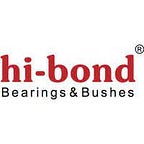Self Aligning Ball Bearing: Features & When to Use?
Self-aligning ball bearings are a specific type of rolling element bearing that can handle shaft misalignment and offer high load capacity and stiffness. Self-aligning ball bearings are a commonly used item in mechanical inventory. They are particularly useful in harsh environments or when precise alignment is necessary due to their distinct features.
Bearings and bushes suppliers worldwide use self-aligning ball bearings to help reduce the effect of misalignment on their applications. The bearing is designed to maintain performance even if minor misalignments exist between the shaft and housing.
These bearings are used in various applications, such as automotive, aerospace, and industrial sectors. Let’s explore the features of a self-aligning ball bearing and learn when to use it with the help of this comprehensive guide.
The Machinery Industry Frequently Utilizes Self-aligning Ball Bearings.
Self-aligning ball bearings have a spherical outer ring raceway and a double-row design. This allows the inner ring, ball, and cage to rotate freely around the bearing center, providing self-aligning performance. The bearing’s self-aligning feature compensates for alignment errors, shaft deformation, and bearing seat deformation. It is ideal for transmission bearings where it is difficult to align the shaft and upper shell and when the shaft is prone to bending. Self-aligning ball bearings can handle both axial and radial loads in both directions.
Related Posts: Top Differences Between Single and Double Row Bearings
How are Self-aligning Bearings Different from Basic Bearings?
Bearings and bushings are essential components in many mechanical systems. Self-aligning bearings are a type of bearing that is widely used in various industries. These bearings have a unique design where the inner ring has two raceways. In contrast, the outer ring has a single spherical raceway with its center of curvature coincident with the bearing axis.
Self-aligning bearings are different from ball bearings because they have two raceway grooves, one on the inner and one on the outer ring, which allows them to correct misalignment caused by housing and shaft errors during installation or machining. This is because the axis of the inner ring, balls, and cage can deflect around the bearing center, which allows for a wider range of applications.
Bearings and bushings suppliers offer different self-aligning bearings, including open and sealed versions. The sealed versions offer additional protection against contaminants, making them suitable for harsh environments. With their ability to correct misalignment and deflect around the bearing center, self-aligning bearings are an excellent choice for applications with high radial loads and moderate axial loads.
The Self-aligning Ball Bearing Consists of a Specific Structure.
Self-aligning ball bearings come in two types: cylindrical bore and tapered bore. The cage can be made of materials like steel plates or synthetic resin. The outer ring raceway is spherical and provides self-alignment, which helps compensate for errors caused by misalignment and shaft deflection. However, it’s important to note that the inner and outer rings should be aligned at most 3 degrees.
Spherical roller bearings can withstand radial and axial loads in different directions. These bearings can bear heavy and sudden loads and have a great capacity to bear radial loads. The inner ring has a tapered hole allowing direct installation or mounting onto a cylindrical shaft using an adapter sleeve or a disassembly cylinder. The bearing cage comes in three variants: steel plate pressed cage, polyamide molding cage, and copper alloy automobile cage.
What are the Features of Self-aligning Ball Bearings
Bearing manufacturing companies offer a variety of bearings to meet the needs of different industries. One of the most popular products is the self-aligning ball bearing, which is designed to mainly bear radial loads while also being able to bear a small axial load. The axial displacement of the shaft (housing) is limited to the clearance limit, making it suitable for applications where the Coaxiality of the support seat hole cannot be strictly guaranteed.
Self-aligning ball bearings are suitable for bearing applications with severe shaft deflection or misalignment. Their unique self-aligning performance allows them to work normally even when the inner and outer sides are relatively inclined, ensuring optimal performance and longevity.
Self-aligning ball bearings have the least friction of all rolling bearings, ensuring they can maintain low temperatures even at high speeds. Additionally, they offer seals with contact seals on both sides of the bearing-designation suffix 2RS1, providing steel plate reinforced seals made of oil and wear-resistant nitrile rubber (NBR rubber). These seals allow work in the operating temperature range of -40°C to +100°C and quickly withstand temperatures up to +120°C, providing reliable protection for your equipment.
Related Posts: Difference to Know between Roller Bearings and Ball Bearings
Final Thoughts
Self-aligning ball bearings are a great choice for applications requiring radial and axial loads and self-alignment capability. They provide low friction and temperature rise even at high speeds, making them suitable for various industries.
Additionally, their seals protect against contaminants and ensure reliable operation in harsh environments. Bearing manufacturers offer both open and sealed versions to meet the needs of different industries. It is important to consider the features of self-aligning ball bearings and choose the appropriate one for your application.
